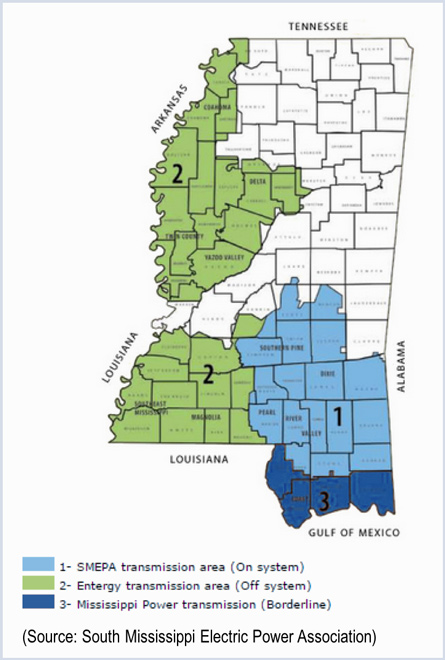By Chris O’Malley
MISO has won approval to revise its Tariff to provide common treatment for network customers seeking to serve network load not physically interconnected with the RTO.
The tariff mechanism sought by MISO and approved by the Federal Energy Regulatory Commission last week is expected to eliminate the need for filing specific non-confirming network integration transmission service agreements on a case-by-case basis (ER15-1745).
The change stems from two non-conforming NITS requests: a 2013 request to allow South Mississippi Electric Power Association to take network service to serve a network load pseudo-tied to SMEPA but not physically interconnected with a transmission owner or independent transmission company within MISO (ER13-2008), and a 2014 MISO request to allow Arkansas Electric Cooperative Corp. a similar right to serve pseudo-tied load (ER14-684).
A pseudo-tie is a mechanism for operationally transferring a resource from the balancing authority in which it is physically located to another BA, which becomes responsible for it for system reliability.
Some MISO transmission owners filed comments in those cases, raising concerns that the two utilities could be receiving special treatment. The transmission owners asked FERC to order MISO come up with a global solution to the issue through changes to its Tariff.
In response, FERC said it expected MISO to offer non-conforming service on a non-discriminatory basis to other transmission customers in similar situations.
After discussions with transmission operators, MISO proposed several changes to Section 31.3 of its Tariff, which required that network load be physically interconnected with a MISO transmission owner or independent transmission company.
The revised Tariff requires that the non-interconnected network load “be part of a pricing zone in MISO, so that the network customer is subject to a rate for network service.”
One way to meet such eligibility requirements is if a non-interconnected network load is pseudo-tied into the MISO balancing authority. MISO stated that provision is necessary because otherwise there wouldn’t be a mechanism to charge the network customer for network service, “meaning the network customer could receive this service for free.”
MISO noted that in its NITS agreements with SMEPA and AECC, it required them to pay a rate for network service based on the MISO zone in which the physically interconnected portion of their load is located.
The revised Tariff also requires network customers to have coordinating arrangements in place with the host transmission owner or independent transco for reporting network load.
The revisions are effective July 19.



